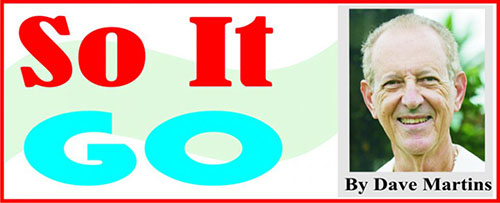As a young man, my roots were almost totally Guyana, with a large slice of Trinidad when I started the Tradewinds band in Toronto where I had migrated and hooked up with a wash of Trinis living in that city. The language of the Caribbean, in all its formations, holds great fascination for me, partly for its ingenuity but also for its highly original combinations or inventions. A good example was my experience in Guyana where I went to college, on a scholarship – my folks could not afford the high school fees – and encountered this range of invention and sheer creation that is a striking feature of Caribbean life.
A prime example occurred during my time at Saints (as we called the college) where i was exposed to the phenomenon of soccer being played during the school breaks, on the expansive playing field on the school grounds in the heart of Georgetown. I don’t know who started it, but soccer gear was expensive so our schoolboy version at Saints was played with a tennis ball or any sort of soft ball, and while the rules of soccer generally applied, our school version had a unique twist that I have seen nowhere else in that any player during a match, in the process of kicking the ball in use, was eligible to be kicked in the rear, by an opposing player nearby. And when I say “kicked” I mean literally, full force with whatever footwear was being used. In fact, the process led to this version of soccer to be dubbed LABASS by those playing it, and would draw almost the entire school gathered on the sidelines in the break from classroom to become engrossed in the action. How the approval of the Jesuits running Saints was obtained I have no idea, but they allowed this apparently reckless modification of soccer to proceed on an almost daily basis on the school grounds in Georgetown.
Perhaps other writers can shed some light on this apparent contradiction, but this version of soccer was very popular with the students and would draw massive crowds every time it was staged. The uproar that occurred when players attempting to kick the ball were themselves kicked in the backside, with the same intensity of a conventional kick, had to be experienced to be believed. Those kicks in the backside, which never drew any penalty by the way, played a pivotal part in the Saints homegrown version of soccer. It’s also worth noting that no other school, anywhere in Guyana, jumped on the bandwagon and brought LABASS to their school field – it was a Saints thing; only at Saints.
As I write this, so many years later, I have no idea if the Saints modification can still be found in the students of this day. It was a creation of those students in the 1950s in Georgetown… yet another example of the imagination and ingenuity of Caribbean students, and for the men of the religious order running the school then who had the good sense to let things be. I have no doubt that a high school administration in Guyana seeking to introduce LABASS in the school curriculum today would be stopped dead in their tracks by today’s educators. I was simply a young country from West Dem, however, I am here to say we were fully on board from day one. LABASS was king, no contest. Notice I am using the past tense. So it go, indeed.





